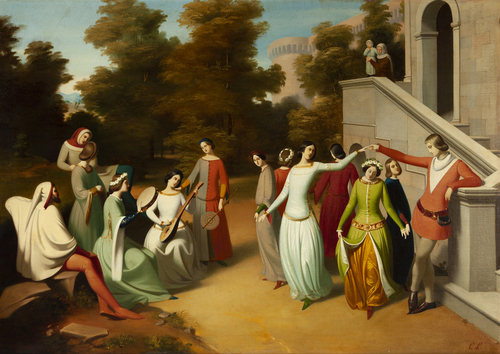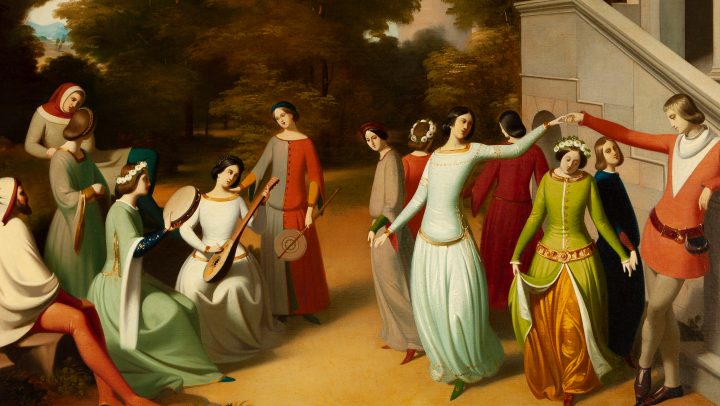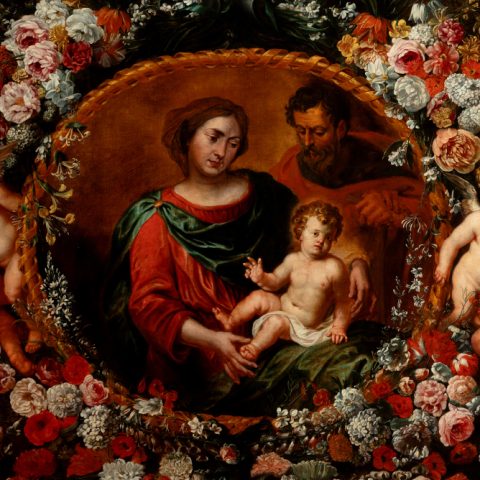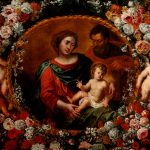The introduction of the Nazarene movement in Catalonia found in Claudio Lorenzale one of its great representatives.
The historical and social upheavals of the early 19th century led to the emergence of artistic movements which, like the Nazarenes of German Romanticism, invoked the glories of past times to restore the lost national spirit. Heirs to the wave of sentimentalism, medievalism and sanctimonious religiosity that was invading Germany at the time, the Nazarenes, led by Friedrich Overbeck and Peter von Cornelius, sought to recover the spirituality and honesty of an art that manifested itself as the purest and truest expression of the Christian faith.
In this way, the neoclassical ideal of perfection, which had been dismissed as superficial, gave way to a supremacy of spiritual content inspired by the models of medieval art and the painting of the masters of the Quatroccento and early Raphael, whose style they considered closer to authentic German nature. In 1908 and with the aim of directly studying the sources of art and Christian culture, the main nucleus of the Nazarenes was established in Rome under the name of the Community of St. Luke, patron saint of painters. Despite being ridiculed at first by Hegel and Goethe, the ideology of Overbeck and company eventually took hold in the Roman environment until it spread throughout Europe thanks to the important public commissions they were assigned (the cycle of frescoes at Casa Bartholdy and the cycle of frescoes at Casa Massimo) and the influence they exerted on other artists who, like Claudio Lorenzale, were at that time boarding in Rome.
The theory and aesthetics of the Nazarenes spread and radiated through direct contact with these young painters who found in Nazarenism the origin of the recovery of the Catalan historical past. In fact, the similarities between the emerging Catalan Renaixença and Nazarene thought led to the integration of an important group of Catalan artists, such as Pelegrín Clavé, Francisco Cerdà, Manuel Vilar, Joaquim Espalter and Pau Milà i Fontanals, as well as Lorenzale himself, who formed the Nazarene Romantic movement in Catalonia.

An example of this is Claudio Lorenzale’s canvas in tender, whose aesthetics and intentionality follow the purist artistic ideology of his master, Friedrich Overbeck.
The piece, inspired by a past that is represented in a bucolic way, introduces us to a scene where the presence of a group of highborn young people, who are enjoying the arts, brings us closer to the Italian aesthetics of the early Renaissance, evoking, to a large extent, the story of The Decameron by Boccaccio in which he narrates the stay of a group of young people in a villa on the outskirts of Florence, where fleeing from the black plague that struck the city, they will live their days devoted exclusively to the arts and leisure. Lorenzale turns here to one of the greatest works of European literature to relive the splendorous past of the humanist ideals initiated by Petrarch in the 14th century.
The purist aesthetic ideals of medieval inspiration are reflected in a scholastic and eclectic composition based on the preponderance of the drawing that determines the forms with a hardness in the outline. Likewise, and as our work illustrates, depth and volume were not part of his plastic concerns, and we can observe in it a minimal use of chiaroscuro, which despite the perspective of the scene, shows us a clear inclination towards flat colors. This uniform luminosity expresses the timelessness that they intended to give to their work as a manifestation of the triumph of the sacred over time.
As one of the most outstanding artists of the Nazarene trend, Lorenzale developed an important teaching activity that led him to found his own academy in defense of the recovery of models prior to Raphael. As the great master he was, the prestige and recognition he achieved influenced much of the Barcelona painting of the time.







